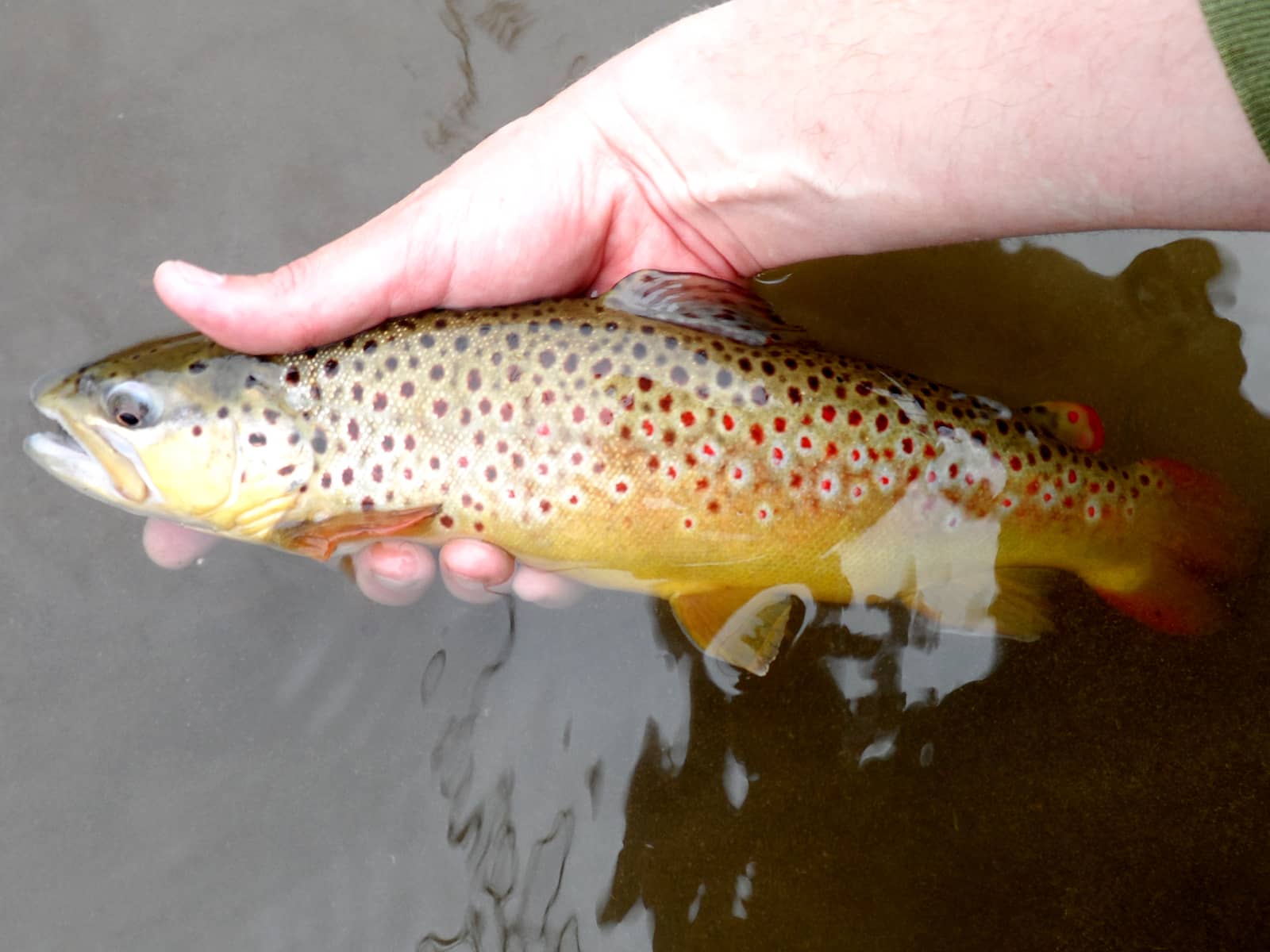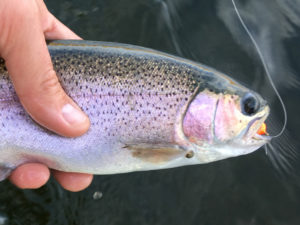
Trout stocked in seasonal streams, like this brown trout caught in southwest Minnesota’s Redwood River, provide a unique angling opportunity which can help anglers grow in terms of tackle and presentation options. Simonson Photo.
By Nick Simonson
Spring brings with it a change in the air, and where rain begins to pour down to bring those May flowers out on the landscape and fill the banks of streams, ponds and lakes with a recharge of something other than snow, so too come other additions to those waters. Stocked trout are placed by state fish and wildlife agencies this time of year to add to the angling variety found throughout the upper Midwest, and while many rainbows, browns and other species of trout are added simply as a put-and-take fishery, these early spring fishing options provide a springboard into different forms of angling, especially for younger anglers or those new to fishing.
While walleyes remain the region’s most popular fish to angle for, and crappies are a massive springtime draw as they make their spawning moves into the shallows, stocked trout can fill the time in between. With Minnesota’s stream trout season just opened, and the stocking of trout in prairie lakes and reservoirs coming up in the Dakotas in the next few weeks, these options help introduce young or inexperienced anglers to a fish that is often aggressive, can be caught a variety of ways, and provides a fun fight at the end of the line.

Foremost, stocked trout of any stripe or spot are often hungry right after they hit the water, having lived in a hatchery for the past few months and then being transported across the countryside. Shortly after their ejection from the tanker truck and a bit of acclimation to their new home, they’ll take to a chunk of nightcrawler speared on a hook (where legal, check restrictions for each specific water), small jigs or spoons and spinners. Simply connect a young angler with one of these options based on skill level and have them get casting for these introduced fish. No matter where a novice might be in his or her particular learning curve, there are many ways to catch trout and they are all fun.
On lighter rods, these fish help teach fight management and utilizing four-pound test can help young anglers master a spinning combo. This includes tuning the drag based on the size of the fish, which may vary depending on their time of stocking and the size class of the trout that are placed in the water. A 16-to-18-inch trout can be a fun battle on light tackle, and learning how to keep the rod tip high and the drag set to a level that prevents line breakage will help new anglers learn those tools of the trade that will carry over to all types of fishing.
Additionally, for those first time fly anglers, stocked trout in a small seasonal stream, a pit or a pond, can help reward them for a winter of learning how to cast and practicing their new found art in a gym or other training area. Since these stockers take to most flies that are in that “half-inch, brown, and buggy” category – as they often match up with the pellets and feed the trout were issues in their rearing tanks – simple flies like pheasant tail nymphs, gold-ribbed hare’s ears, small woolly buggers, and woolly worms are enough to get the job done and help increase the odds of a positive connection. This in turn provides immediate reward for those novices’ exploration of a new form of fishing.
While the white fades from the edges of our streams and lakes, a splash of color is the perfect way to kick off spring. Find it in the glimmer of the pink-and-metallic blue of a rainbow trout or the gold, black and bronze of a brown trout placed in a water near you. While you’re at it, take along someone new to try some of these proven tactics or expand their horizons on the fly. Share what you know and all that stocked trout provide for both the next generation of anglers and this fun and exciting spring happening occurring now…in our outdoors.
